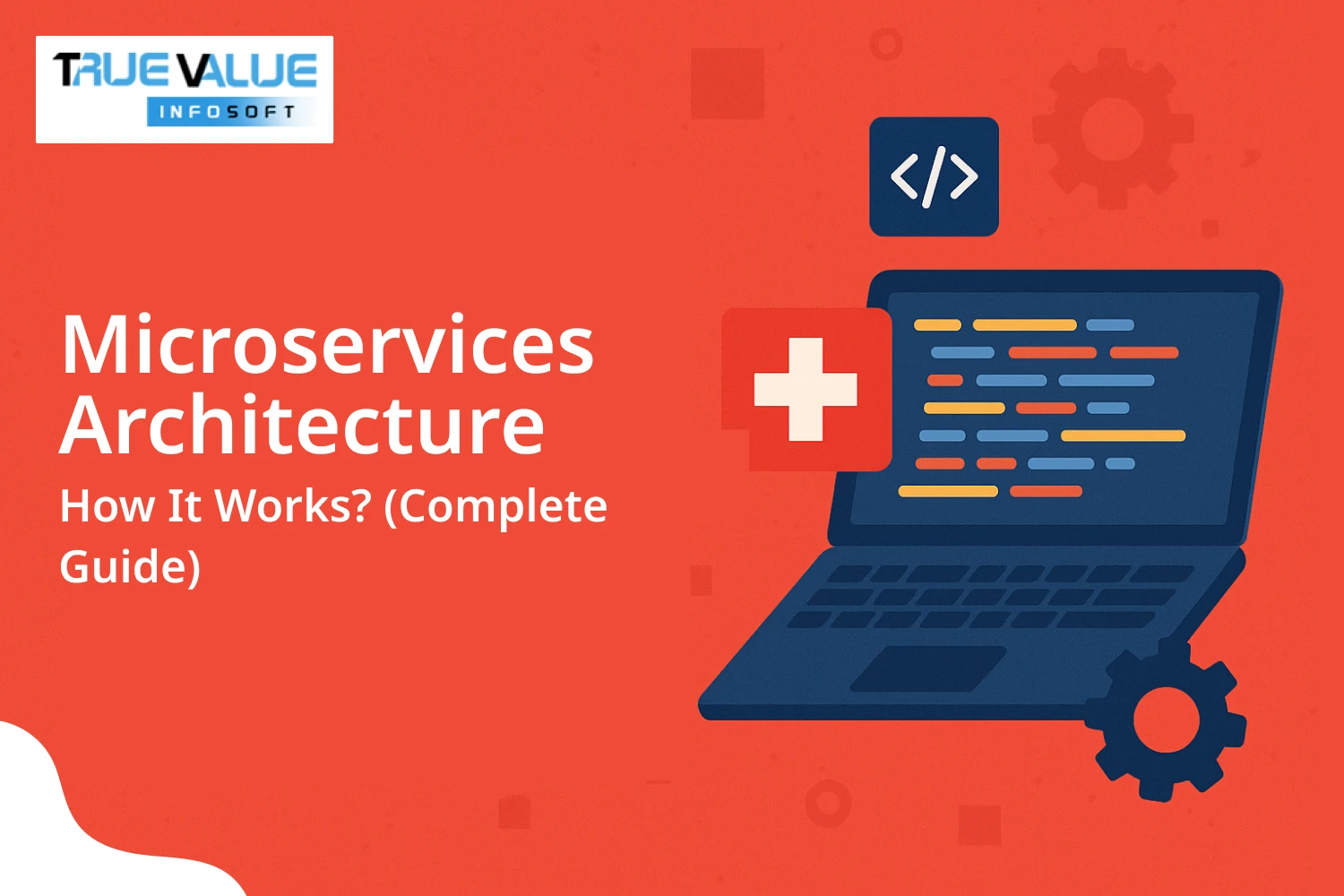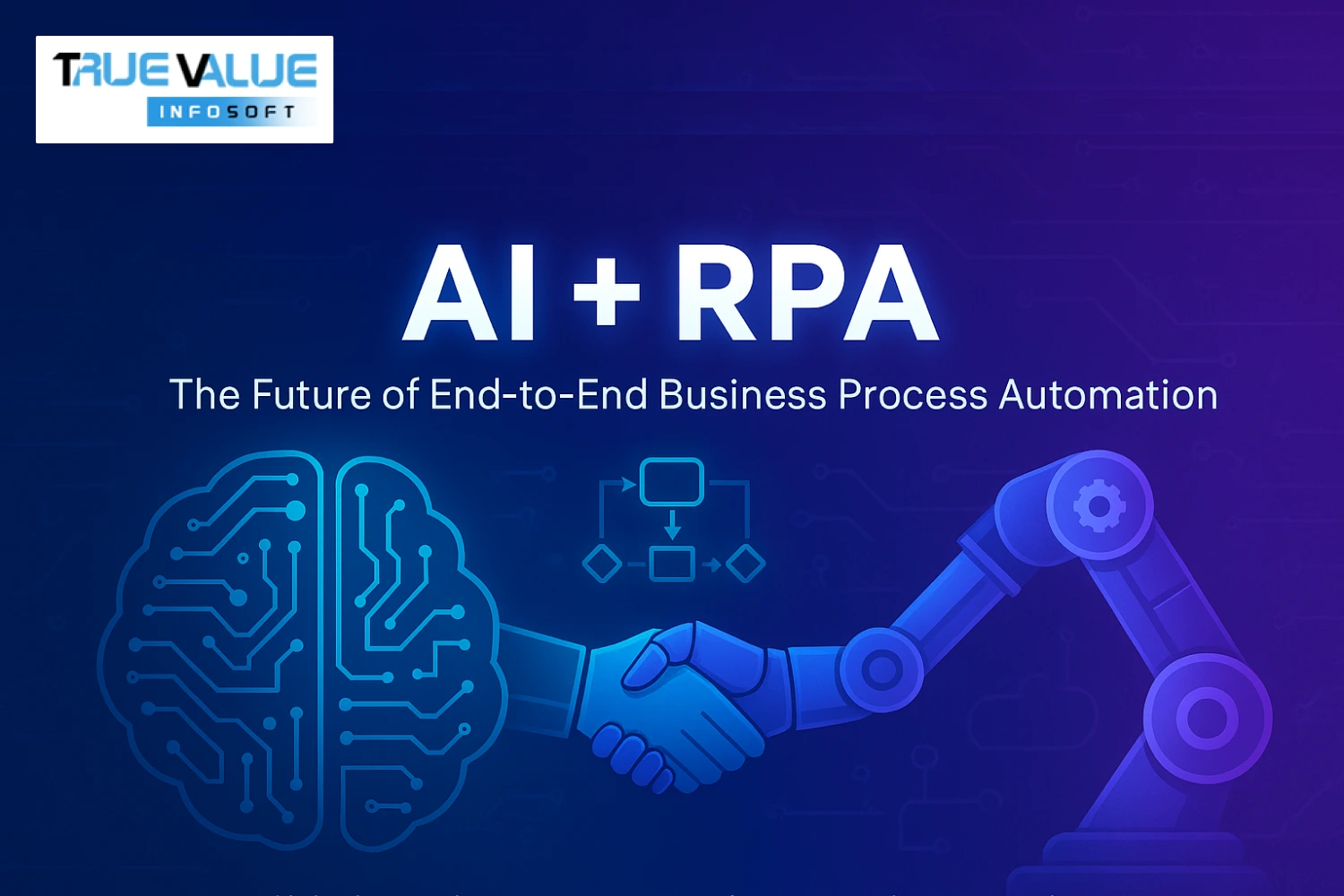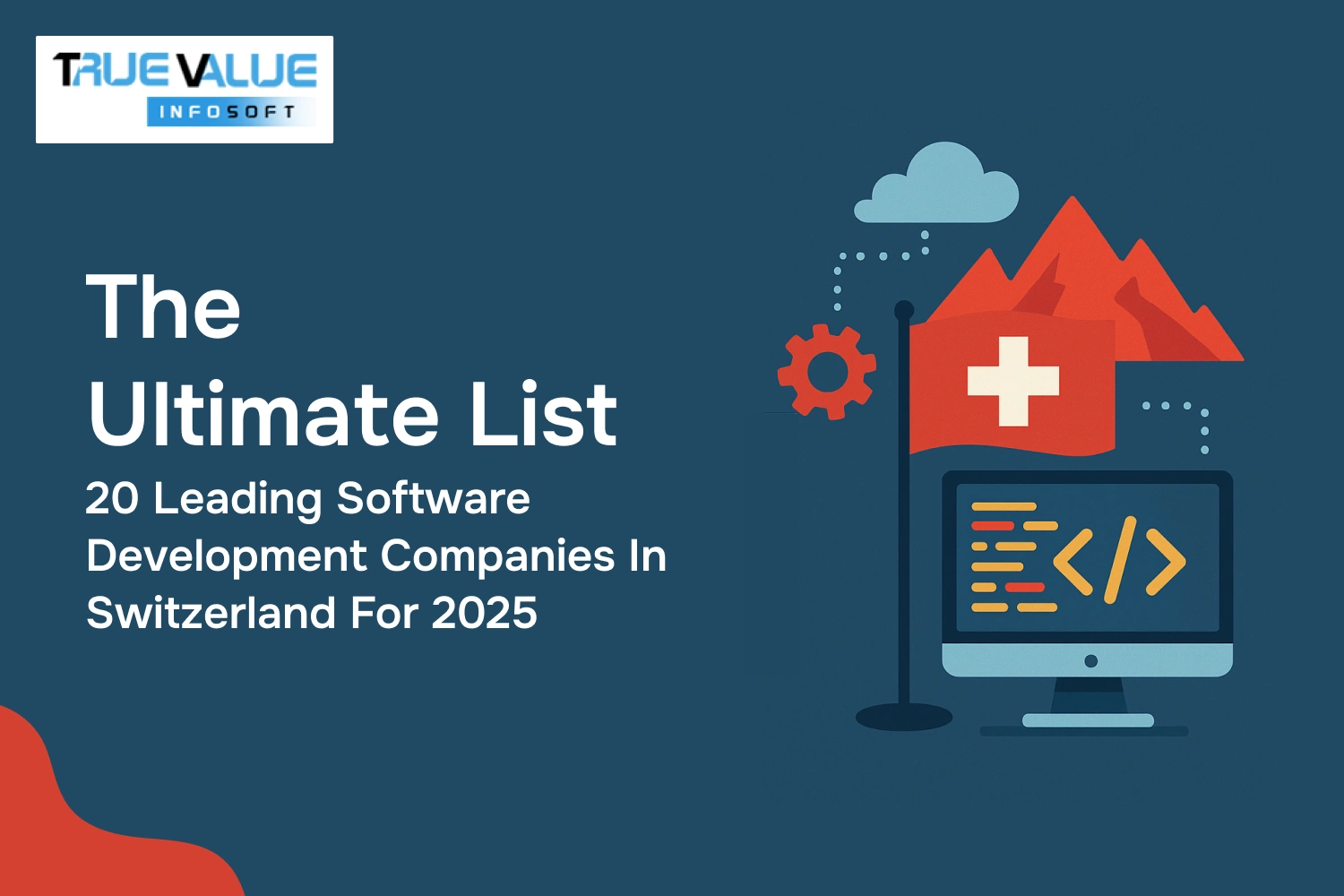Introduction
Have you ever wondered how complex applications stay flexible, scalable, and easy to maintain in today’s fast-paced digital world? The answer lies in Microservices Architecture, a modern approach that is transforming how software is built and deployed. Instead of creating one massive application, microservices break down functionality into small, independent services that communicate with each other. Each microservice focuses on a specific business capability, making the overall system more agile and resilient.
Here’s how it works: each microservice is developed, deployed, and scaled independently. They often run in containers and communicate via lightweight protocols like HTTP/REST or messaging queues. This modularity allows teams to update or fix one part of the app without impacting the whole system. It also supports continuous integration and continuous delivery (CI/CD), speeding up innovation cycles.
For businesses looking to adopt this cutting-edge architecture, partnering with the best app development company in India, True Value Infosoft, is a smart choice. With deep expertise in microservices and cloud-native solutions, True Value Infosoft helps organizations build scalable, secure, and high-performance applications that drive growth and efficiency in 2025 and beyond. Whether you’re a startup or enterprise, microservices can be the key to unlocking your app’s full potential.
What is Microservices Architecture?
Microservices Architecture is a style of software design where applications are broken down into small, independent services. Each service focuses on a specific business function and communicates with others using lightweight protocols like HTTP/REST or messaging queues. This design promotes modularity, allowing teams to develop, test, and deploy services independently.
Unlike monolithic architecture, where all components are tightly integrated, microservices operate autonomously. This enables faster development, greater scalability, and flexibility. Each service can be written in a different language and run on different platforms, as long as they communicate through agreed-upon protocols.
How Does Microservices Architecture Work?
Microservices Architecture works by decomposing an application into a collection of services that are:
- Independently Deployable: Each microservice can be deployed without affecting others.
- Loosely Coupled: Services are designed to minimize dependencies.
- Individually Scalable: Resources can be allocated to services based on demand.
Services communicate via APIs or message brokers. A service registry, like Eureka, helps services find each other. Load balancers distribute traffic, and tools like Docker and Kubernetes handle containerization and orchestration.
APIs, messaging systems, and DevOps practices support the lifecycle of microservices, including version control, automated testing, CI/CD pipelines, and monitoring with tools like Prometheus or ELK Stack.
Core Components of Microservices
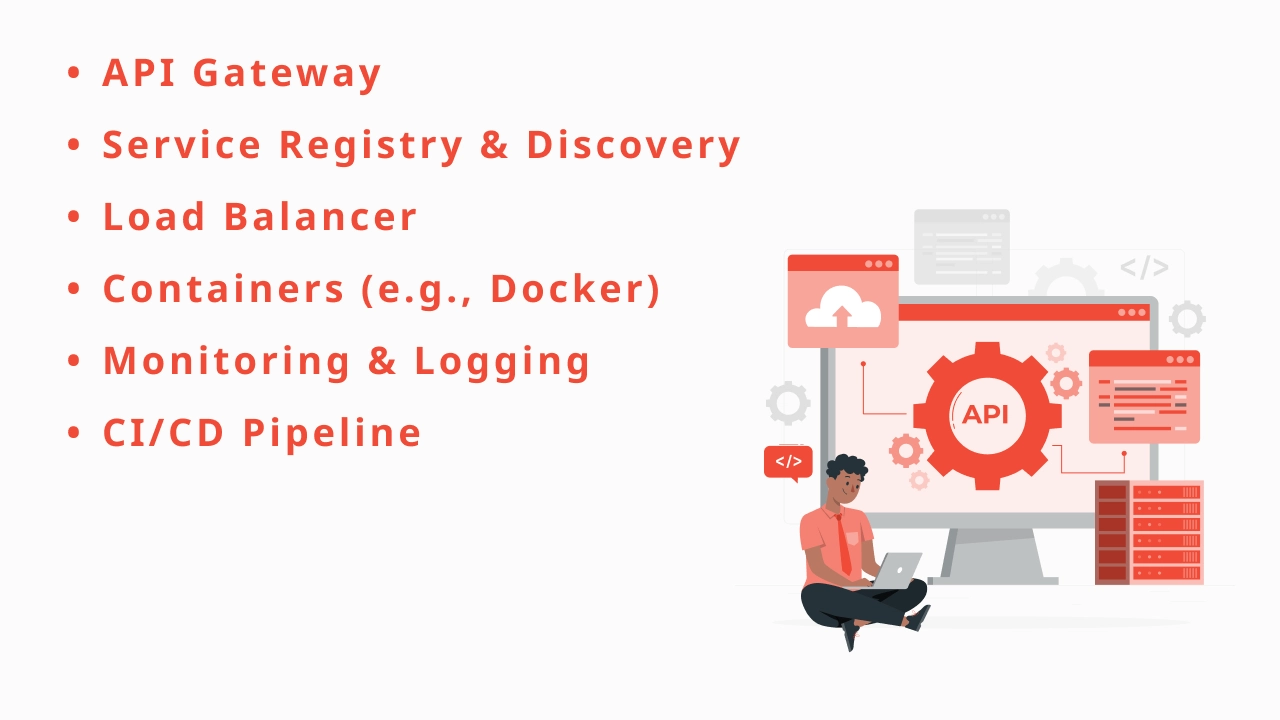
Microservices architecture is built around modular, independently deployable services that work together to form a complete application. Each microservice focuses on a single business capability, offering agility and scalability. Here are the key components:
- API Gateway – Acts as a single entry point for client interactions with various microservices.
- Service Registry & Discovery – Helps locate services dynamically across distributed systems.
- Load Balancer – Distributes traffic evenly to maintain system stability.
- Containers (e.g., Docker) – Package and isolate services for consistent deployment.
- Monitoring & Logging – Ensures observability and quick issue resolution.
- CI/CD Pipeline – Automates testing and deployment for rapid releases.
Benefits of Microservices Architecture
- Scalability: Scale only the services that need it.
- Resilience: A failure in one service doesn't bring down the whole system.
- Faster Time to Market: Independent development speeds up releases.
- Technology Flexibility: Use different languages or databases for different services.
- Improved Fault Isolation: Easier to identify and fix issues.
- Continuous Delivery: Supports DevOps and CI/CD pipelines.
- Resource Optimization: Efficient use of infrastructure.
Challenges of Microservices Architecture
- Complexity: Increased number of services to manage.
- Data Consistency: Maintaining consistency across services is harder.
- Service Discovery Issues: Difficulties in locating services dynamically.
- Monitoring: Requires advanced logging and tracing mechanisms.
- Security Risks: More attack surfaces due to multiple endpoints.
- Testing: Requires extensive integration and end-to-end testing.
- Latency: Network calls between services may introduce delays.
Microservices vs Monolithic Architecture
- Modularity: Microservices are modular, monoliths are tightly integrated.
- Scalability: Microservices can scale individual components; monoliths cannot.
- Deployment: Easier with microservices; requires full redeployments in monoliths.
- Technology Stack: Microservices support polyglot programming.
- Team Autonomy: Each team can own a microservice.
- Performance: Monoliths may have fewer network delays.
Transitioning from Monolith to Microservices
- Assessment: Analyze your monolith and identify service boundaries.
- Decoupling: Extract services incrementally.
- Infrastructure Readiness: Prepare cloud or on-prem environments.
- Data Management: Split monolithic databases.
- API Development: Develop APIs for inter-service communication.
- Containerization: Dockerize services.
- CI/CD Pipeline: Automate testing and deployment.
- Monitoring and Logging: Implement centralized systems.
Best Practices in Microservices Development
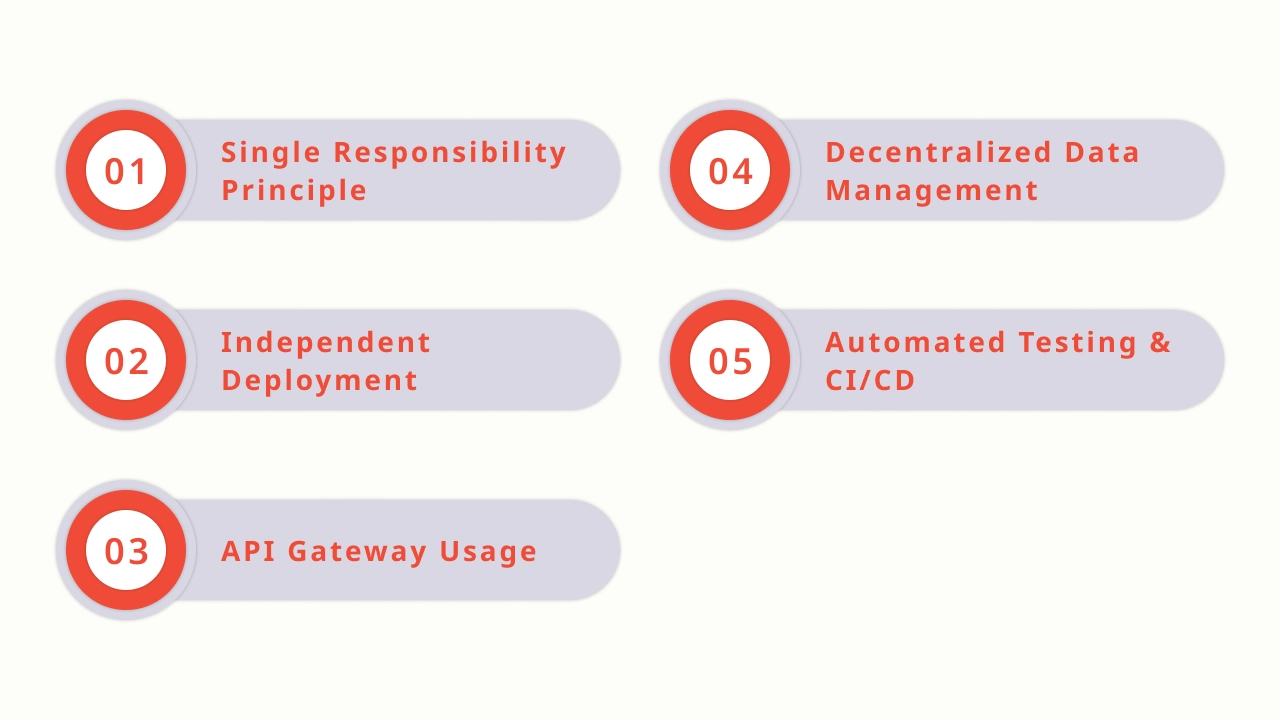
Microservices architecture enables modular, scalable, and independent service deployment. To maximize its benefits, follow these best practices:
- Single Responsibility Principle: Each microservice should handle one specific task or business function.
- Independent Deployment: Design services so they can be deployed and updated without affecting others.
- API Gateway Usage: Use an API gateway to manage requests, authentication, and routing efficiently.
- Decentralized Data Management: Each service should have its own database to avoid tight coupling.
- Automated Testing & CI/CD: Ensure quality and agility with automated testing and continuous integration/deployment pipelines.
These practices ensure scalable, maintainable, and high-performance microservices solutions.
Tools and Technologies for Microservices
- Containerization: Docker, Podman
- Orchestration: Kubernetes, Docker Swarm
- Service Mesh: Istio, Linkerd
- API Gateway: Kong, Zuul, APIgee
- Messaging: RabbitMQ, Kafka, NATS
- Monitoring: Prometheus, Grafana, ELK Stack
- CI/CD: Jenkins, GitLab CI, CircleCI
- Service Discovery: Eureka, Consul
- Configuration Management: Spring Cloud Config, HashiCorp Vault
Real-World Examples of Microservices
- Netflix: Handles billions of daily requests via microservices.
- Amazon: Each service like cart, payments, and shipping is independent.
- Uber: Divided its monolith into hundreds of microservices for scalability.
- Spotify: Uses microservices for music recommendations and playback.
- Twitter: Transitioned from monolith to microservices to manage rapid growth.
Why Choose True Value Infosoft for Software Development in India?
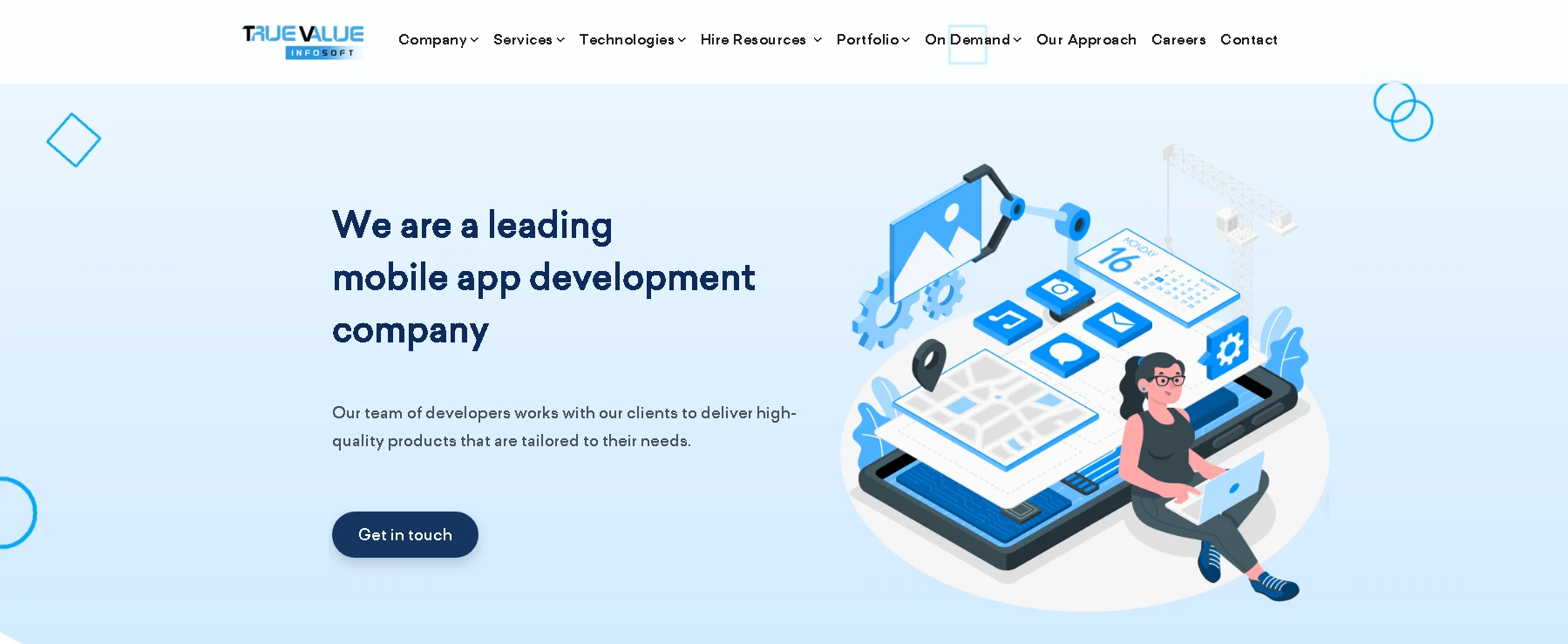
At True Value Infosoft, we understand the complexities and potential of Microservices Architecture. As one of the Top 10 app development company india, we bring a wealth of experience in building scalable, efficient, and robust software solutions.
- Expertise in Modern Technologies: Our team is skilled in Docker, Kubernetes, Spring Boot, Node.js, and more.
- Tailored Solutions: We provide customized microservices solutions based on your business needs.
- Agile Development: We follow agile methodologies for faster, iterative development.
- Scalability and Maintenance: Solutions are built for long-term scalability and easy maintenance.
- Security and Compliance: Adherence to top industry standards ensures your software is secure and compliant.
- Client-Centric Approach: We collaborate closely to ensure project alignment with your goals.
Choosing True Value Infosoft for top-notch microservices development that drives digital transformation and business growth.
Conclusion
Microservices Architecture is transforming the way modern applications are built and scaled. By dividing applications into independently deployable services, it enhances agility, fault isolation, and development speed. Although there are challenges—such as complexity and data consistency—they can be mitigated with the right tools, practices, and expertise.
Organizations like Netflix, Amazon, and Uber have adopted microservices to meet growing customer demands, and smaller companies are following suit to stay competitive. Transitioning from a monolith to microservices requires strategic planning and the right technology stack.
At True Value Infosoft, we offer comprehensive services to help you embrace microservices successfully. From consultation and architecture design to implementation and scaling, we ensure your digital infrastructure is future-ready.
If you're planning to modernize your legacy system or build a new application from the ground up, microservices can be the game-changer you need.
FAQs
Industries like eCommerce, finance, healthcare, and logistics benefit significantly due to the need for scalability, flexibility, and rapid deployment.
It depends on the complexity of the application, but typically it takes several months to a year for a full transition.
It can be more secure if implemented correctly, as each service can be isolated and protected individually.
Popular choices include Java, Node.js, Python, and Go due to their strong support for RESTful services and containerization.
With our deep domain expertise, modern tech stack proficiency, and client-first approach, we deliver scalable and robust microservices solutions tailored to your business needs.
